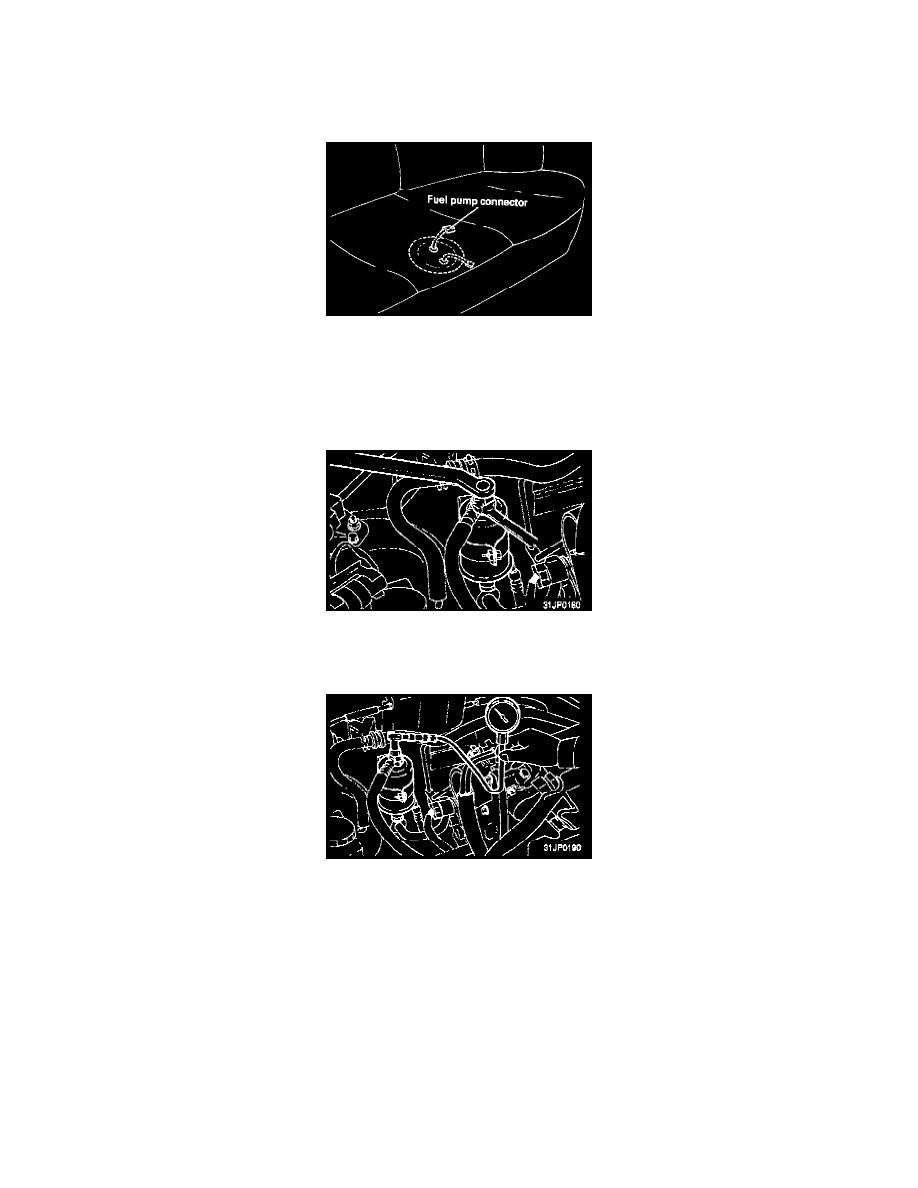Elantra L4-1595cc 1.6L DOHC (1993)

Fuel Pressure Regulator: Testing and Inspection
FUEL PRESSURE TEST
1. Reduce the internal pressure of the fuel pipes and hoses by the following procedures.
Fuel Pump Connector Location
-
Disconnect the fuel pump harness connector in the rear seat side.
-
Start the engine and after it stops by itself, turn the ignition switch to the OFF position.
-
Disconnect the battery negative (-) terminal.
-
Connect the fuel pump harness connector.
2. Remove the upper eye bolt while holding the fuel filter nut securely.
CAUTION: Cover the hose connection with a shop towel to prevent splashing of fuel caused by residual pressure in the fuel line
3. Using the fuel pressure gauge adapter (09353-24000, 09353- 24100, 09353-24200), install the fuel-pressure gauge to the fuel filter. Tighten the
bolt to the specified torque.
Tightening torque: 25 - 35 Nm (18 - 25 ft lb)
4. Connect the battery's negative (-) terminal.
5. Apply battery voltage to the terminal for the pump drive and activate the fuel pump; then, with fuel pressure applied, check that there is no fuel
leakage from the pressure gauge or connection part.
6. Disconnect the vacuum hose from the pressure regulator, and plug the hose end. Measure the fuel pressure at idle.
Standard value: 320 - 340 kPa (46 - 49 psi)
7. Measure the fuel pressure when the vacuum hose is connected to the pressure regulator.
Standard value Approximately: 270 kPa (39 psi)
